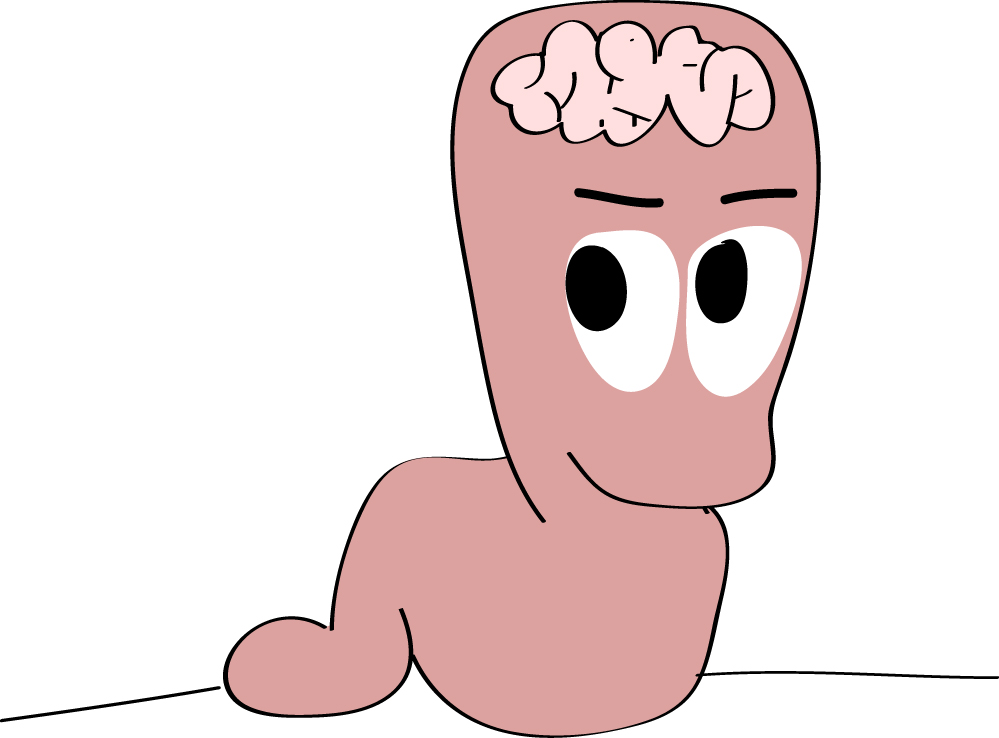This post is also available in Dutch.
A talk about the worm brain, that was the highlight of my first day at the world’s largest conference for neuroscientists. I can hear you thinking: “Do worms even have brains? Why would their brains be interesting for understanding our brain?”

Picture by Lieneke
The worm that I’m talking about is called Caenorhabditis elegans (C. elegans). It’s a roundworm, at a size of approximately 1 mm, that lives in the soil and likes to eat bacteria. In biology C. elegans is famous because it was the first organism for which all genes were mapped.
The worm brain
Aside from mapping genes, the nervous system of the worm has also been completely mapped. It consists of 302 nerve cells, compared with the approximate 90 billion nerve cells in the human brain. Although the worm’s nervous system does not have the shape of a brain, it is based on the same principles. Since the worm’s brain is fully mapped, and the structure is clear and small, scientifically, it can be studied in a relatively easy manner.
Roaming or dwelling
The nervous system enables us to adjust to an environment that is continuously changing. If the situation is favorable, we can carry on with what we are doing. If the situation is unfavorable, for example when food supplies are empty, we need to take action. The same holds for C. elegans.
Researchers study the behavior of C. elegans in the lab by looking at how long the worms roam and dwell, and when they decide to leave their current location in search for a better place. All sorts of factors can affect behavior, for example neurotransmitters that can modulate communication between nerve cells, or genetic variation between individuals.
Modulation of nerve cells
In C. elegans these modulation factors can be easily studied. As such, we now know that the neurotransmitter serotonin is involved in the worm demonstrating more dwelling than roaming behaviour. On the contrary, if serotonin is blocked the worms displays more roaming behaviour.
So, neurotransmitters can modulate nerve cells, and we also observe this modulation in humans. For example, serotonin is known to play an important role in symptoms of depression and other psychiatric disorders. Furthermore, many drugs of abuse can act directly on certain neurotransmitter systems which in turn will drastically alter one’s state of mind.
Genetic variation
Genetic variation can also explain differences in worm behaviour. Researchers have discovered that worms from a particular family, the Hawaiian, tend to leave an environment much faster when there is little food available (as it makes the environment less favourable for living). Other families of worms tend to stay in the same place much longer before they move to a more favorable location.
Across families, one family is known to be more sensitive to certain cues in the environment than others. In the same way, some people are more or less sensitive to certain cues in the environment, for example sounds, light or odors.
All in all the worm brain – or nervous system – is an elegant model to study the principles of the brain. The human and worm brain are both a collection of nervous cells that collectively try to adjust as well as possible to the ever-changing environment around us.
More information
Website of Cori Bargmann who gave the lecture on C. elegans
This blog was written by Lieneke and can also be read in Dutch.
